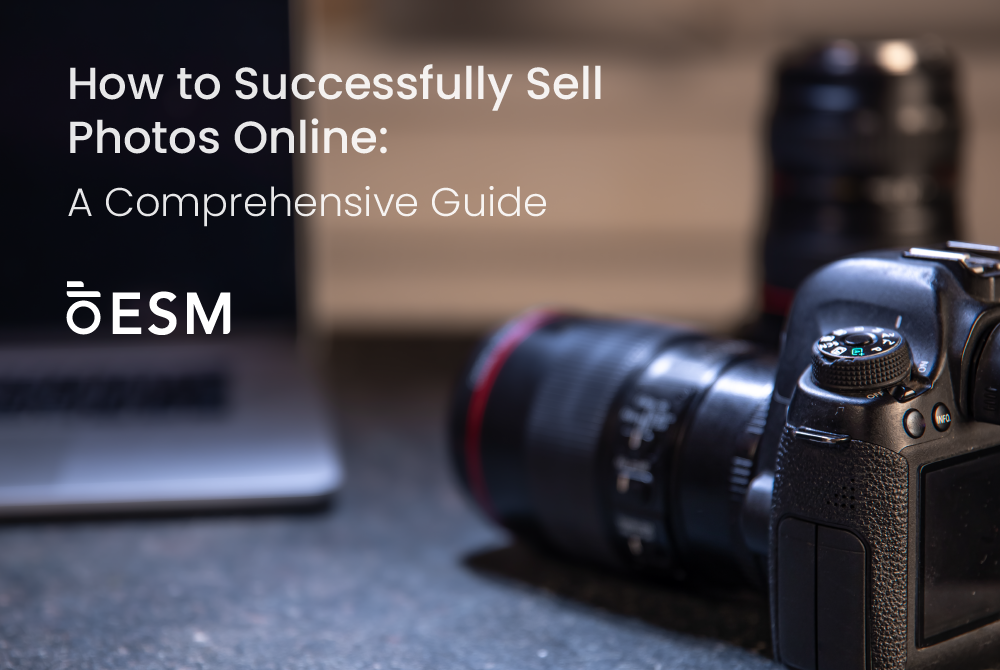“Learn how to sell photos online with tips on pricing, platforms, and marketing. Essential Studio Manager streamlines your photography business.”
In today’s digital age, selling photos online has become a lucrative venture for photographers of all skill levels. Whether you’re an amateur or a professional, the internet offers a vast marketplace to showcase and sell your images. This guide will walk you through the essential steps and tools needed to start and succeed in selling your photos online.
Understanding the Market

Before diving into the world of online photo sales, it’s crucial to understand the market dynamics. The demand for high-quality images spans various industries, including advertising, publishing, and digital content creation. With the rise of websites, blogs, and social media, businesses and individuals constantly seek unique visuals to enhance their online presence.
To capitalize on this demand, photographers must identify their niche. Popular categories include landscapes, portraits, lifestyle, and stock photography. Focusing on a niche allows you to target specific buyers and tailor your marketing strategies effectively.
Choosing the Right Platform
Selecting the right platform to sell your photos is a critical step. There are several options available, each with its advantages and disadvantages:
- Stock Photography Websites: Platforms like Shutterstock, Adobe Stock, and Getty Images are popular choices for selling stock photos. These websites offer exposure to a large audience, but they also take a commission from your sales.
- Personal Website or Portfolio: Creating a personal website gives you full control over pricing and presentation. Using a platform like Essential Studio Manager can streamline the process. Essential Studio Manager offers an all-in-one solution for managing your photography business, including client communication, invoicing, and gallery creation. This tool can help you present a professional image and handle transactions efficiently.
- Social Media and Marketplaces: Websites like Instagram, Etsy, and eBay offer additional avenues to reach potential buyers. While these platforms are not exclusively for photography, they can be effective for selling unique or niche images.
Pricing Your Photos
Setting the right price for your photos can be challenging. Consider the following factors:
- Quality and Uniqueness: High-quality, unique images can command higher prices.
- Market Demand: Research what similar photos are selling for in your niche.
- Usage Rights: Decide whether to sell photos with exclusive or non-exclusive rights. Exclusive rights typically fetch higher prices.
Using Essential Studio Manager, you can easily manage pricing and sales, track client orders, and automate invoicing. This tool simplifies the business side of photography, allowing you to focus on creating great content.

Marketing Your Photos
Once your photos are uploaded and your pricing is set, the next step is marketing. Here are some strategies to boost your sales:
- SEO Optimization: Optimize your photo descriptions and website with relevant keywords. This improves your visibility in search engines.
- Social Media Promotion: Use platforms like Instagram, Pinterest, and Facebook to showcase your work. Engage with followers and use hashtags to increase reach.
- Email Marketing: Build an email list of potential buyers and keep them informed about new releases or special offers.
Essential Studio Manager can help streamline these processes by managing your client database and integrating marketing tools. This allows you to track interactions, send personalized emails, and analyze the effectiveness of your campaigns.
Protecting Your Work
Protecting your photos from unauthorized use is essential. Consider the following measures:
- Watermarking: Add watermarks to your images to deter unauthorized use. While not foolproof, it can discourage casual theft.
- Licensing Agreements: Clearly define the terms of use for your photos. Essential Studio Manager allows you to create and manage contracts, ensuring that buyers understand the licensing terms.

Handling Transactions and Customer Service
Smooth and secure transactions are crucial for maintaining a professional image. Essential Studio Manager offers a secure platform for processing payments and managing orders. This tool helps ensure that transactions are completed efficiently and securely, enhancing customer satisfaction.
Customer service is another vital aspect. Respond promptly to inquiries and address any issues professionally. Good customer service can lead to repeat business and positive word-of-mouth referrals.
Conclusion
Selling photos online offers a unique opportunity to turn your passion for photography into a profitable business. By understanding the market, choosing the right platforms, pricing your work appropriately, and marketing effectively, you can reach a broad audience and achieve success.
Tools like Essential Studio Manager can significantly streamline the process, making it easier to manage your business and focus on what you do best—creating stunning visuals. Remember, the key to success lies in continuous learning and adaptation. Stay informed about market trends, experiment with different marketing strategies, and always strive to improve the quality of your work. With dedication and the right approach, selling photos online can be a rewarding and profitable venture.
FAQs: Selling Photos Online
Q1: Do I need professional equipment to sell photos online?
No, professional equipment is not a necessity, but it helps improve the quality of your images. High-quality cameras and lenses can produce better results, but many successful photographers use smartphones or basic equipment, especially in certain niches.
Q2: How do I determine the value of my photos?
The value of your photos depends on factors like quality, uniqueness, and market demand. Research similar photos in your niche to get a sense of pricing. Over time, as you build a reputation, you can adjust your prices accordingly.
Q3: Can I sell the same photo on multiple platforms?
Yes, you can sell the same photo on multiple platforms unless you’ve granted exclusive rights to a buyer. Always read the terms and conditions of each platform to ensure compliance with their policies.
Q4: How can I protect my photos from being stolen online?
Watermarking your images and using low-resolution previews can help deter theft. Additionally, using licensing agreements clarifies how your photos can be used, providing legal recourse if they are misused.
Q5: What is Essential Studio Manager, and how does it help?
Essential Studio Manager is an all-in-one business management tool designed for photographers. It helps manage client communication, invoicing, gallery creation, and marketing, streamlining the business aspects of selling photos online.
Q6: How can I market my photos more effectively?
Use a combination of SEO optimization, social media promotion, and email marketing to reach a broader audience. Engaging with your audience and staying active on social media platforms can significantly boost your visibility and sales.
Q7: Is selling photos online profitable?
Selling photos online can be profitable, especially if you have a niche focus and actively market your work. Like any business, it requires time and effort to build a customer base and establish a steady income stream.
Q8: How important is branding in selling photos online?
Branding is crucial as it helps differentiate your work from others and creates a recognizable identity. Consistent branding across your website, social media, and other platforms builds trust and attracts loyal customers.
Q9: Can I sell photos online part-time?
Yes, many photographers have started selling photos online as a part-time venture. This allows you to test the market and refine your offerings before potentially expanding into a full-time business.
Q10: What type of photos sell best online?
The type of photos that sell best online depends on your niche. Popular categories include travel, lifestyle, nature, and conceptual images. Staying updated with trends and listening to customer feedback can help you tailor your content to market demand.




